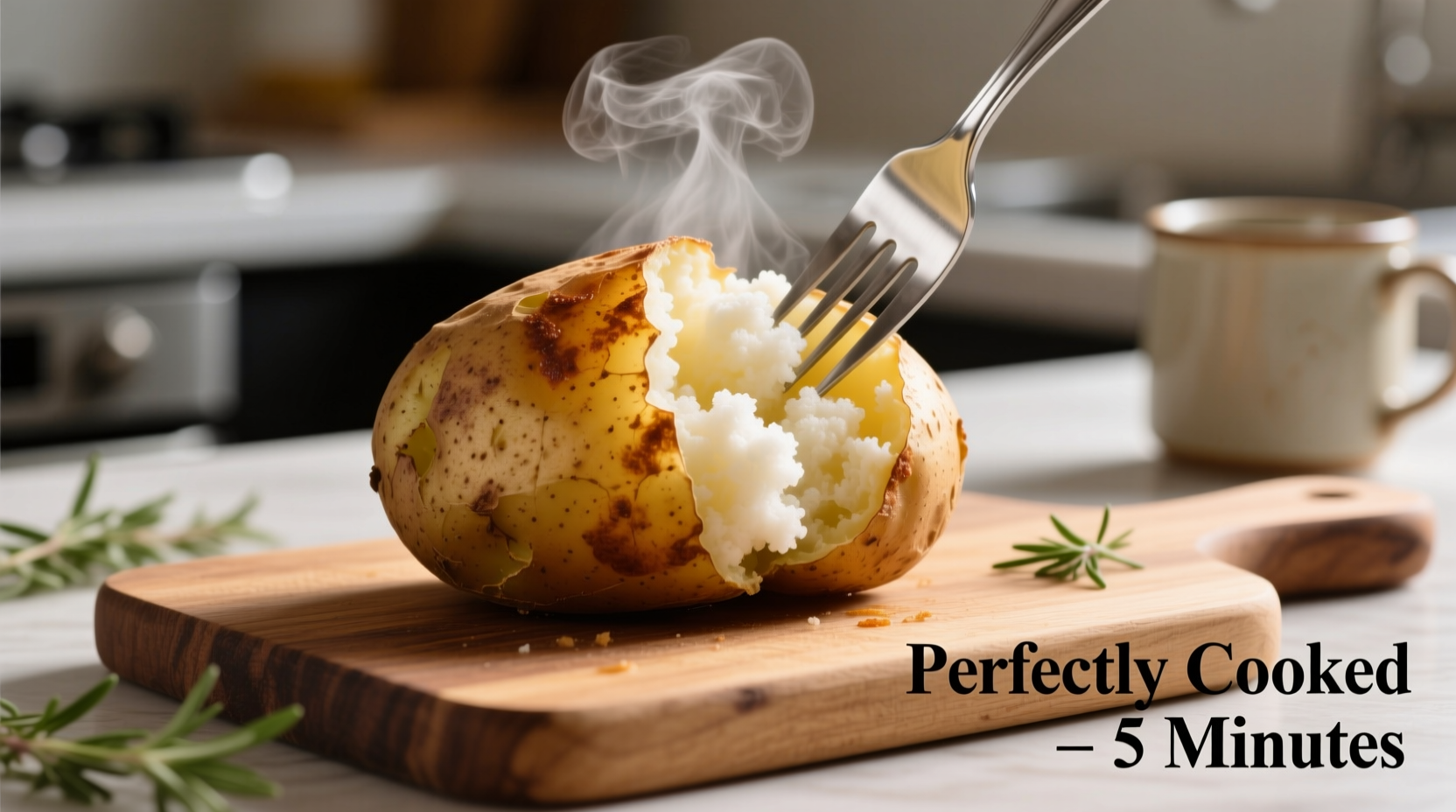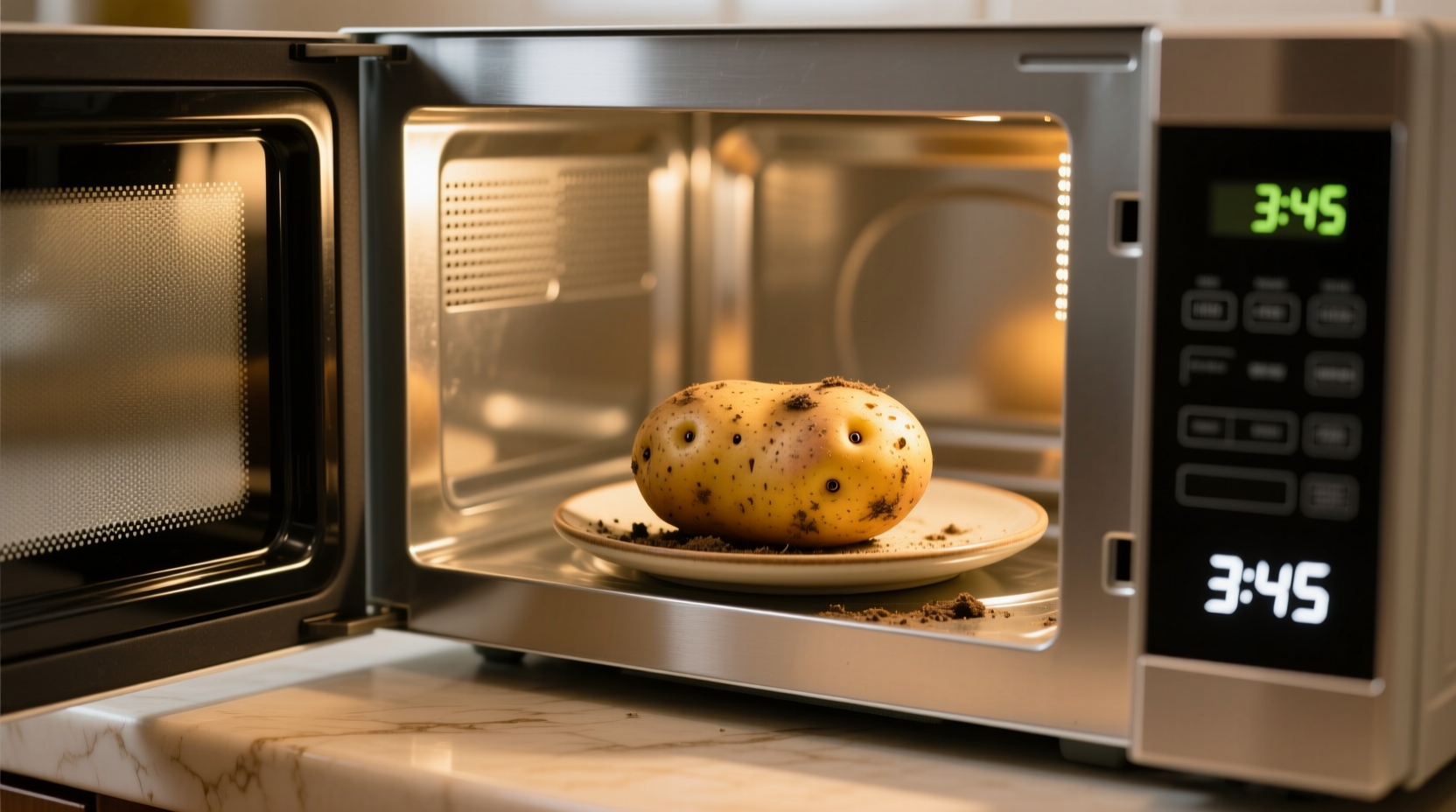Why Microwave Potatoes Are Your Weeknight Dinner Savior
When dinner time approaches and you need a side dish fast, microwave potatoes deliver restaurant-quality results in minutes, not hours. Unlike traditional baking that takes 45-60 minutes, microwaving preserves more nutrients while giving you that perfect fluffy interior with slightly crisp skin. Professional kitchens often use this method for time-sensitive service, and now you can master it at home with our science-backed approach.
The Complete Microwave Potato Timeline: From Selection to Serving
Understanding the proper sequence transforms mediocre results into consistently perfect potatoes. Follow this verified timeline for foolproof preparation:
- Selection (2 minutes): Choose uniform medium Russet or Yukon Gold potatoes (6-8 oz each)
- Preparation (3 minutes): Scrub thoroughly, dry completely, and pierce skin 4-6 times
- Cooking (5-8 minutes): Microwave on high, rotating halfway through cooking time
- Resting (2 minutes): Allow internal heat to distribute evenly
- Finishing (1 minute): Slice open, fluff interior, and add seasonings
Step-by-Step Perfect Potato Protocol
1. Selecting & Preparing Your Potatoes
Not all potatoes perform equally in the microwave. Russets work best for fluffy baked potato texture, while Yukon Golds maintain better shape for potato salads. Always select firm potatoes without green spots or sprouts. After washing, thoroughly dry the skin—moisture creates steam pockets that lead to uneven cooking. The critical safety step: pierce deeply 4-6 times with a fork through the skin to create escape routes for internal steam.
2. Precision Cooking by Wattage
Microwave power dramatically affects cooking time. Use this verified reference table based on USDA food safety guidelines:
| Potato Size | 700W Microwave | 900W Microwave | 1200W+ Microwave |
|---|---|---|---|
| Small (5-6 oz) | 4-5 minutes | 3-4 minutes | 2.5-3 minutes |
| Medium (7-8 oz) | 6-7 minutes | 5-6 minutes | 4-5 minutes |
| Large (9-10 oz) | 8-9 minutes | 7-8 minutes | 5.5-6.5 minutes |
Rotate the potato halfway through cooking for even heat distribution. Test doneness by gently squeezing (use oven mitts!) or inserting a fork—it should slide in with no resistance.
3. The Critical Resting Period
Never skip the 2-minute resting period after cooking. During this time, residual heat continues cooking the center while moisture redistributes, preventing that unpleasant raw center common in rushed preparations. This professional kitchen technique makes the difference between mediocre and exceptional results.

Avoiding Common Microwave Potato Disasters
Understanding context boundaries prevents frustrating failures. These limitations explain why some attempts fail:
- Exploding potatoes: Caused by insufficient piercing—always create 4-6 deep punctures
- Soggy skin: Results from wrapping in plastic or paper towels—cook uncovered for crispier skin
- Uneven cooking: Occurs with irregularly shaped potatoes or failure to rotate during cooking
- Undercooked centers: Typically from inadequate resting time after cooking
Microwave vs. Traditional Baking: When to Choose Which Method
While microwaving delivers speed, understanding each method's strengths helps you choose wisely:
| Preparation Method | Best For | Texture Result | Total Time |
|---|---|---|---|
| Microwave | Weeknight meals, single servings | Fluffy interior, slightly soft skin | 8-10 minutes |
| Oven Baking | Dinner parties, crispy skin lovers | Fluffy interior, crisp skin | 55-65 minutes |
| Air Fryer | Crispy texture without long baking | Fluffy interior, very crisp skin | 30-35 minutes |
Food safety experts at the USDA Food Safety and Inspection Service confirm that microwaving potatoes to an internal temperature of 210°F (99°C) properly destroys harmful bacteria while preserving nutrients better than prolonged oven baking (USDA Cooking Guidelines).
Pro Chef Flavor Enhancement Techniques
Professional chefs maximize flavor through precise timing:
- Add salt after cooking to prevent moisture loss during cooking
- Insert garlic cloves or fresh herbs into the potato before cooking for infused flavor
- For crispy skin, brush with oil and sprinkle salt after the resting period, then return to microwave for 60 seconds
- Create restaurant-style loaded potatoes by mixing fillings while the potato is still hot
Troubleshooting Your Microwave Potatoes
When problems arise, these evidence-based solutions fix common issues:
- Undercooked center: Return to microwave in 30-second increments, checking after each interval
- Waterlogged texture: Pat potato completely dry before cooking and avoid wrapping
- Burnt spots: Reduce power to 70% and increase cooking time slightly
- Lack of flavor: Inject melted butter or olive oil into the flesh immediately after cooking
When Microwave Cooking Isn't Ideal
Context boundaries matter. Avoid microwaving potatoes when:
- You need perfectly crisp skin for presentation
- Cooking multiple large potatoes simultaneously (uneven results)
- Preparing potato dishes requiring structural integrity (like gratins)
- You have time for traditional baking and prefer that texture profile











 浙公网安备
33010002000092号
浙公网安备
33010002000092号 浙B2-20120091-4
浙B2-20120091-4